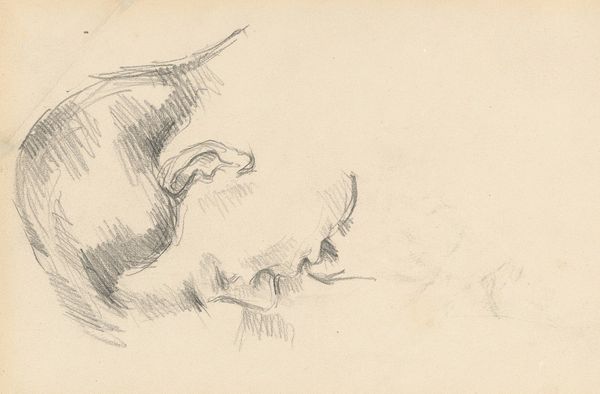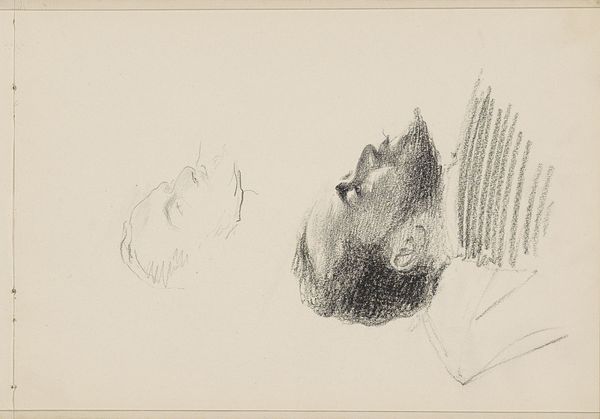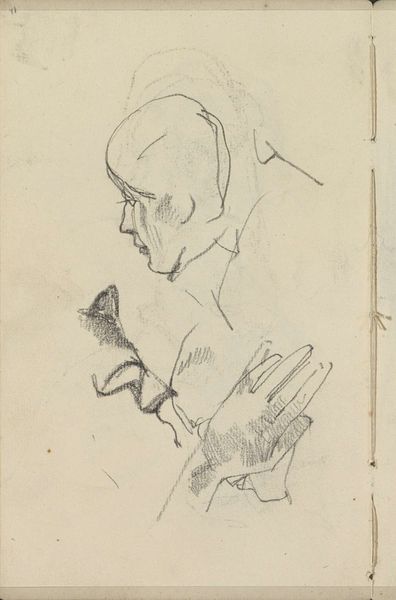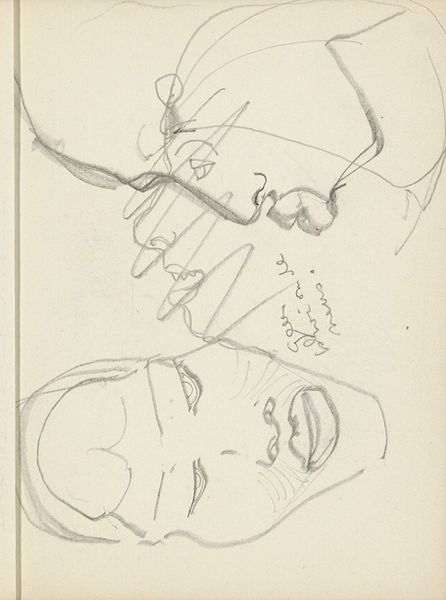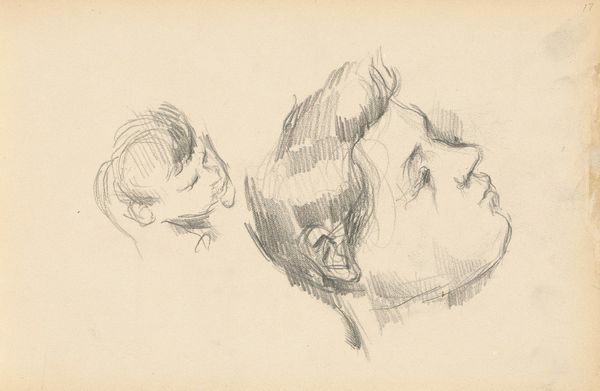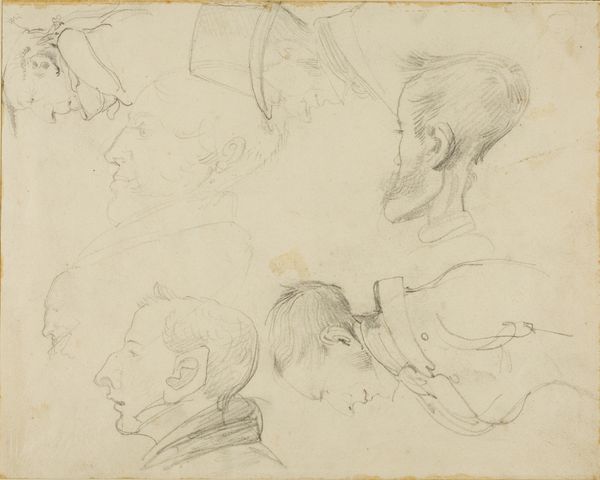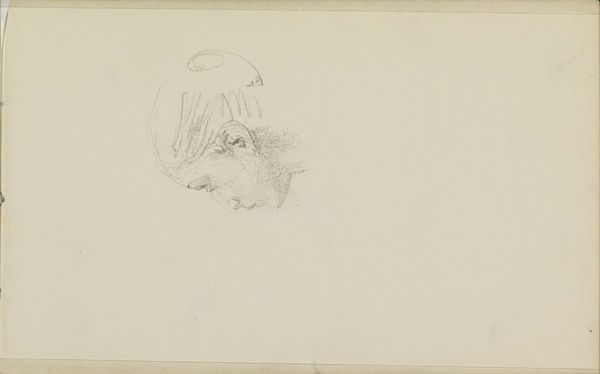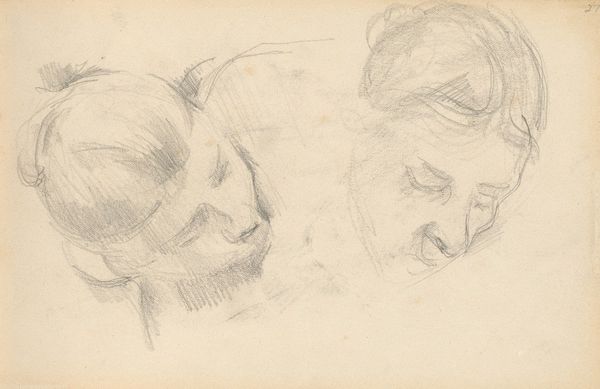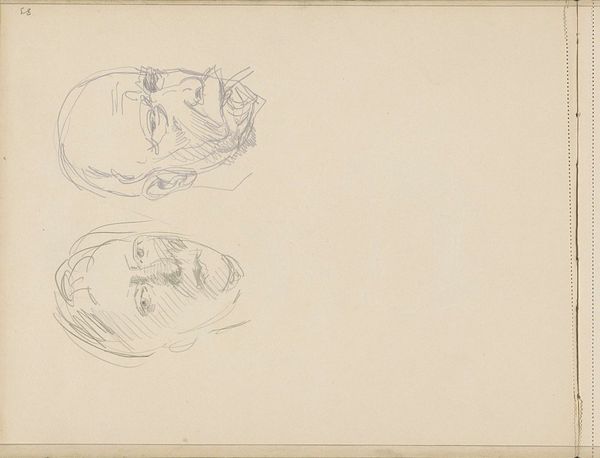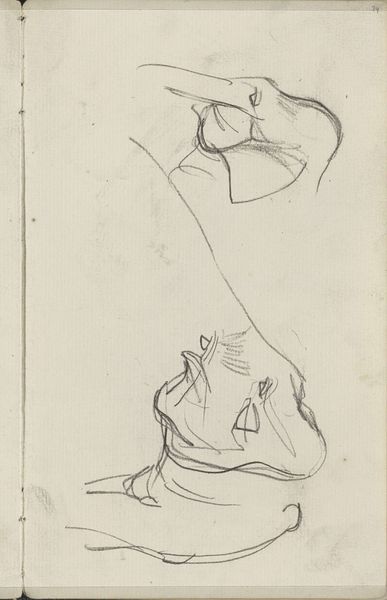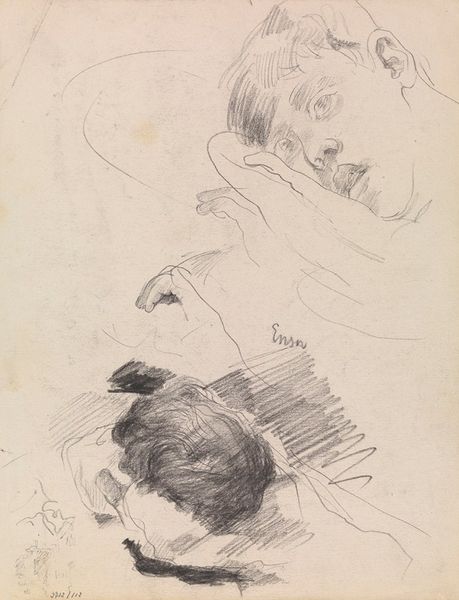
drawing, pencil
#
portrait
#
drawing
#
self-portrait
#
pencil
#
portrait drawing
#
post-impressionism
Copyright: Public Domain: Artvee
Paul Cézanne made this graphite drawing, Three Heads, One of Madame Cézanne, in France sometime in the late 19th century. It is a preparatory sketch, a glimpse into the artist's process of translating the world onto paper. But look closer and consider the social conventions of the time. What did it mean for a woman to be represented in art? How did the male gaze shape those representations? Cézanne's wife, Madame Hortense Fiquet, appears in many of his works. Knowing this, how might their relationship—and the power dynamics within it—have influenced these portrayals? We might ask whether the drawing subverts or reinforces the social norms. Understanding the image demands research, delving into letters and records to uncover the cultural context in which it was made. With careful study, we can reveal how the making of art is tied up with the social and institutional forces of its time.
Comments
No comments
Be the first to comment and join the conversation on the ultimate creative platform.
